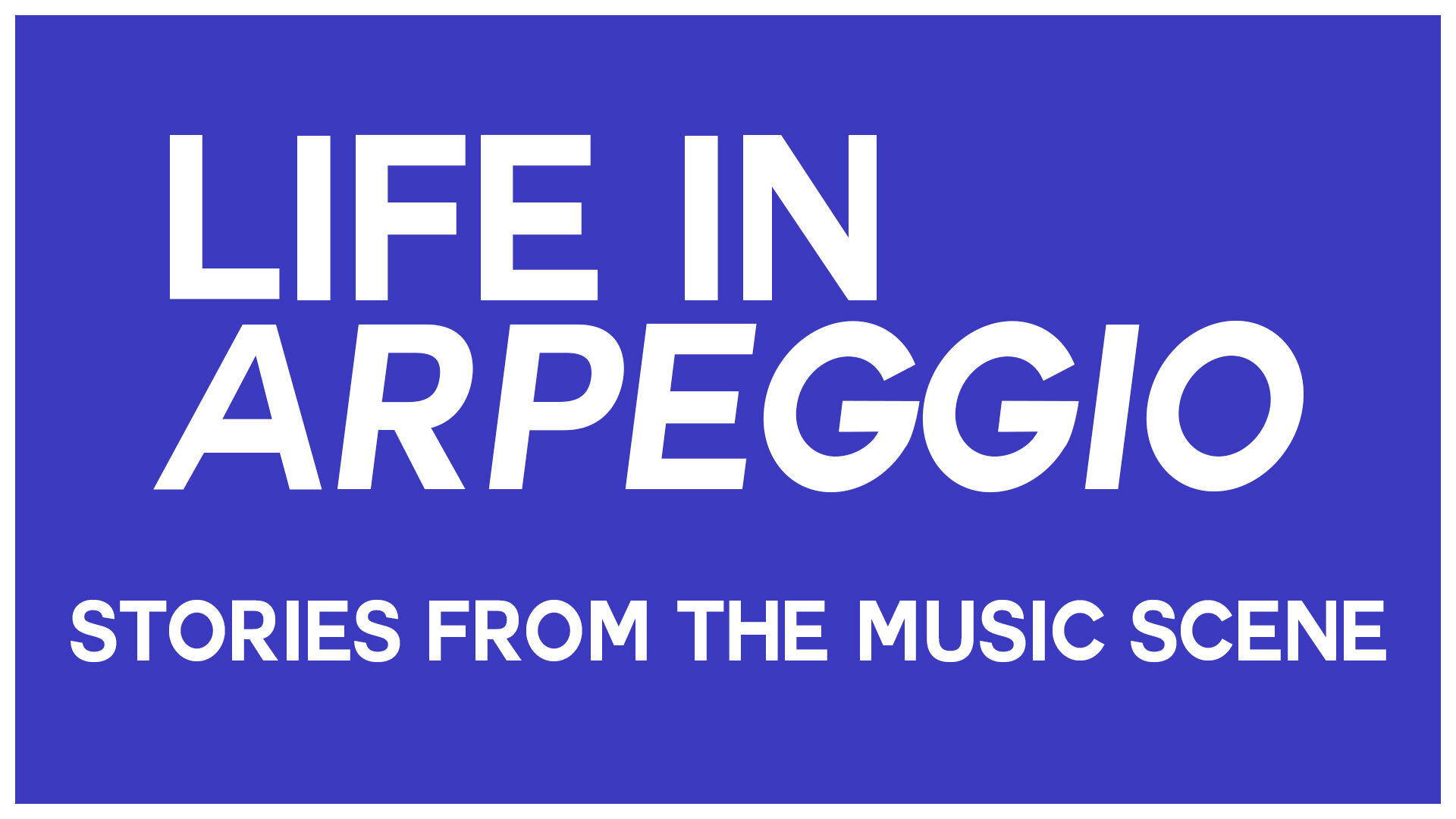A Sensorial Recipe: KITCHEN. LABEL Reflects On Its Journey Of Experimental, Picturesque Works
KITCHEN. LABEL has been fostering a home for experimental musicians since 2008 (Credit: All artworks courtesy of KITCHEN. LABEL)
An anthology of pieces forged from tropes of time and folklore. An introspective revisitation to dig up an inspiration once lost. A warped snapshot of Japanese history with odes to Shinobi and Kurosawa. And a journey that mirrors the phenomenon of migratory birds against one’s movement within nature. These are just some of the abstract stories that reside within the spectrum of works from KITCHEN. LABEL, an imprint that’s been harbouring and nurturing these musical microcosms since 2008. The sounds that seep from these seeds take on a reflective temperament rooted in intrepid experimentation, flowing from the seas of ambient and neo-classical to folk and avant-garde. These aren’t compositions that you rush through. They are the antithesis of a noxious culture where music is digested at breakneck speed. On the contrary, the catalogue of KITCHEN. LABEL insists you slow down the clock and escape within.
The label was founded by Ricks Ang and April Lee, who also perform and make music together as ASPIDISTRAFLY (Credit: KITCHEN. LABEL Facebook page)
Like its repertoire, KITCHEN. LABEL is a story that possesses numerous chapters in its identity. The undaunted brainchild of Ricks Ang and April Lee – professional collaborators, life partners, and co-musicians as ASPIDISTRAFLY – KITCHEN. LABEL is an extension of an idea first born in 2001, evolving from a platform for artworks to a full-fledged creative studio, and culminating in the acclaimed record label that it is today. The label’s captivating musical territory has transcended borders due to its serendipitous influence in two homes, Singapore and Japan. Over the years, the label has amassed a following and built a community on Japanese soil following performance tours as ASPIDISTRAFLY and fortunate encounters. This cross-cultural connection can also be seen its international roster of signees, with contributions from the likes of haruka nakamura and Meitei joining local figures such as Hanging Up The Moon, Kin Leonn and sonicbrat.


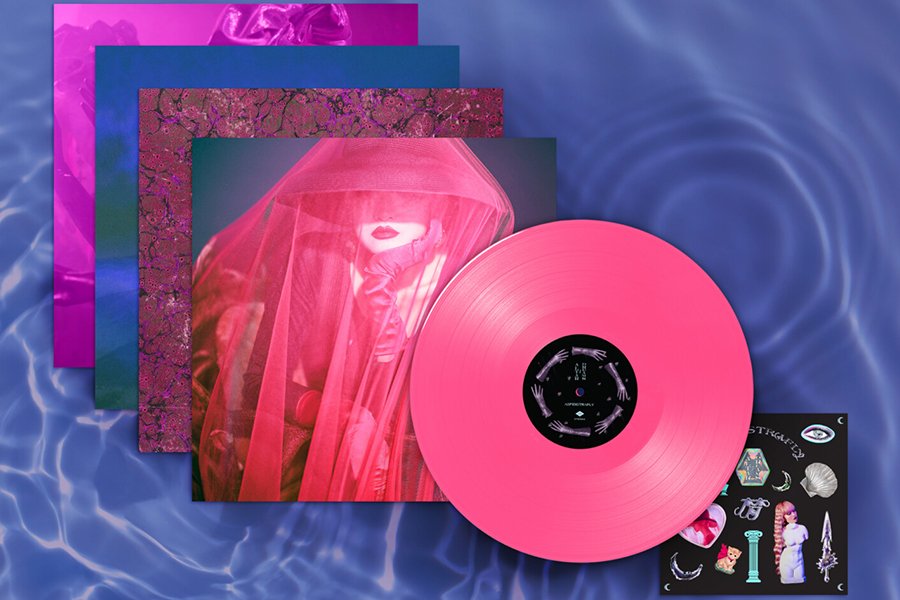

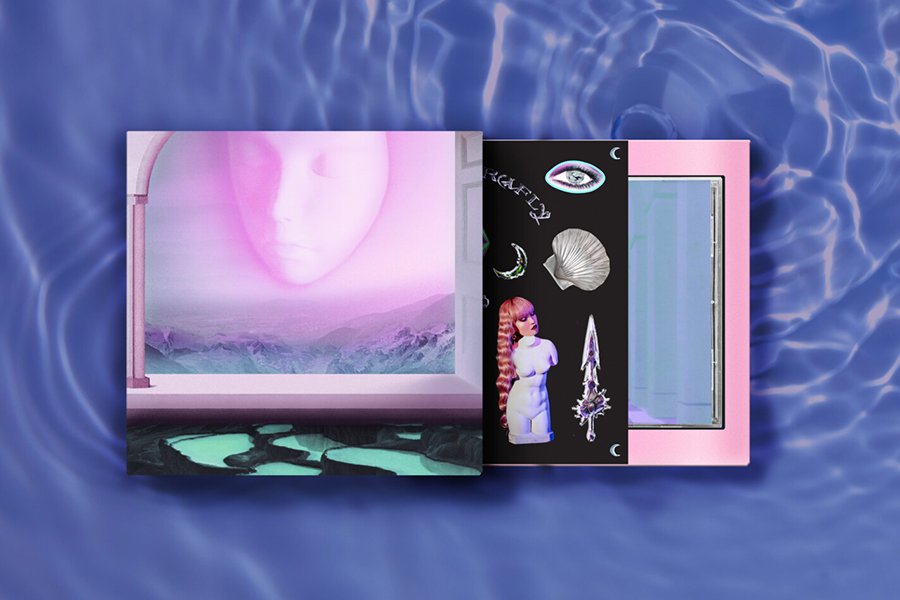
Another slice of appeal can be carved from the label’s aesthetic approach to its releases. To further the storytelling potential of each one, the label packages every release with meticulous attention to detail, logically attributable to Ricks’ and April’s joint expertise in creative direction. The visual of each oeuvre is engrossing and stunning, curated to complement the themes and textures that rest within. And not unlike the charm of a book, these releases are often distributed in the analogue formats of vinyl and cassette; a piece of art that you can hold and admire tangibly. If your imagination ever needed a nudge in the right direction while deep-diving into these unorthodox works, these fully-realised identities are an eloquent guide. This is a timeless portfolio that sets the bar high.
On the cusp of the label’s 15th year anniversary, KITCHEN. LABEL has released Altar of Dreams, the long-awaited third album of its core duo, ASPIDISTRAFLY. It is a bewitching journey of stray components that convene harmoniously; a dream-filtered escapade that perpetuates the spellbinding heart of their past works. A decade in the making, this subsequent voyage witnesses the two wandering on a canvas of recorded samples à la musique concrète, fairytale orchestral elements, lingering guitar excursions and mesmeric vocals that caress and haunt. It’s a sensation of both rediscovery and familiarity for the label’s co-founding duo, and you can tell that they are relishing the euphoria that new creation brings.
In this interview, I speak to Ricks to decipher the recipe of KITCHEN. LABEL’s success, and the milestones of its story so far.
Ricks performing as one half of ASPIDISTRAFLY in Tokyo (Credit: KITCHEN. LABEL Facebook page)
Hey Ricks. KITCHEN. LABEL has been a force of nature forging a niche yet magnetic presence since 2008, and like all organic entities, it grows. How would you say the label has evolved over the years?
Our ethos remains the same as when we started and will always continue to set forth new directions in music and expand from the parameters of what the label has to offer. 14 years since our inception, we have navigated and fortunately survived the unpredictably changing music industry. There are always exciting avenues to explore when paradigm shifts happen. We went through a period where the CD format started its decline. And then came the importance of digital streaming and the emergence of vinyl records and even cassette tapes. We dealt with that, so apart from our constant quest to grow musically, we also have to accommodate the different formats and how listeners consume music. Overall, I think that feeds a certain hunger for discovering the unknown. Evolution itself is something that keeps us going.
The pillars of professional growth and emotional self-maturity are often inseparable. What lessons have you learned from running the label the way you have, and how have they have shaped who you are as a person?
In the beginning, I had felt most comfortable working alone. But as the years passed, I learned that keeping people that you trust and choosing the right collaborators can only act as further fuel for the music and growth of the label. I started appreciating interacting with the artists and being a part of their process. When we work together, I still prefer to see what our synergy produces rather than dictating the outcome. I love collaborations, and the power of group consciousness leads us to the subsequent work. Symbiosis is everything. We wouldn’t have grown if not for all the good people surrounding us and the label.
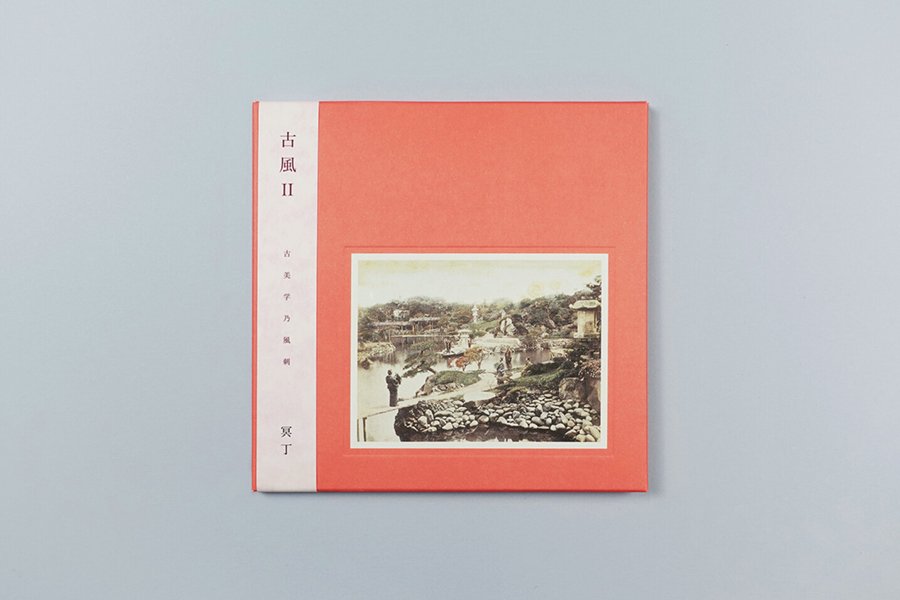
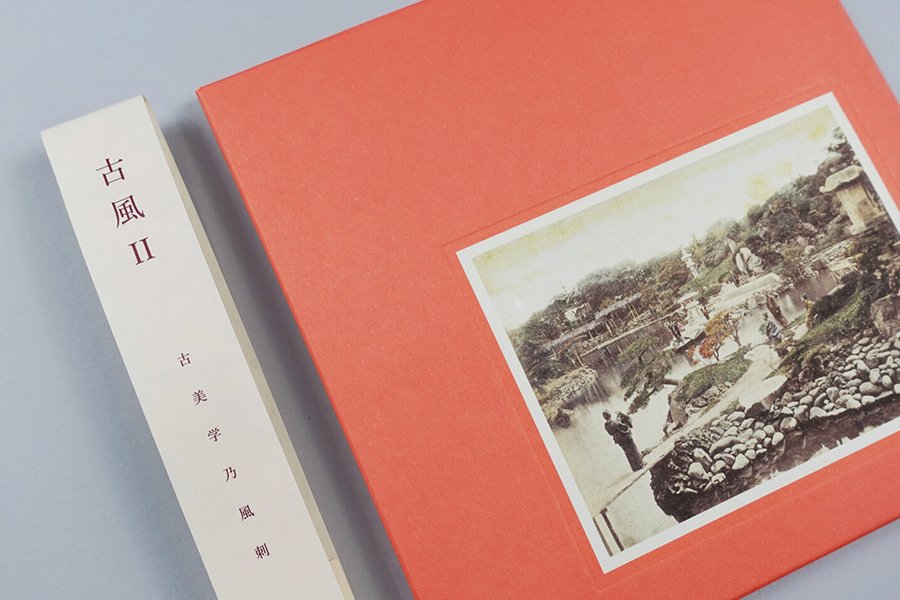
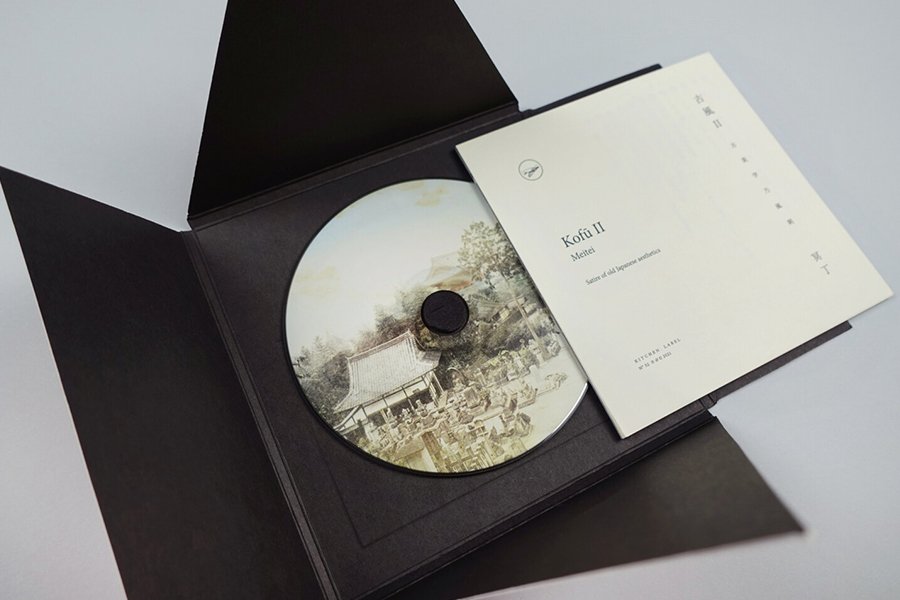
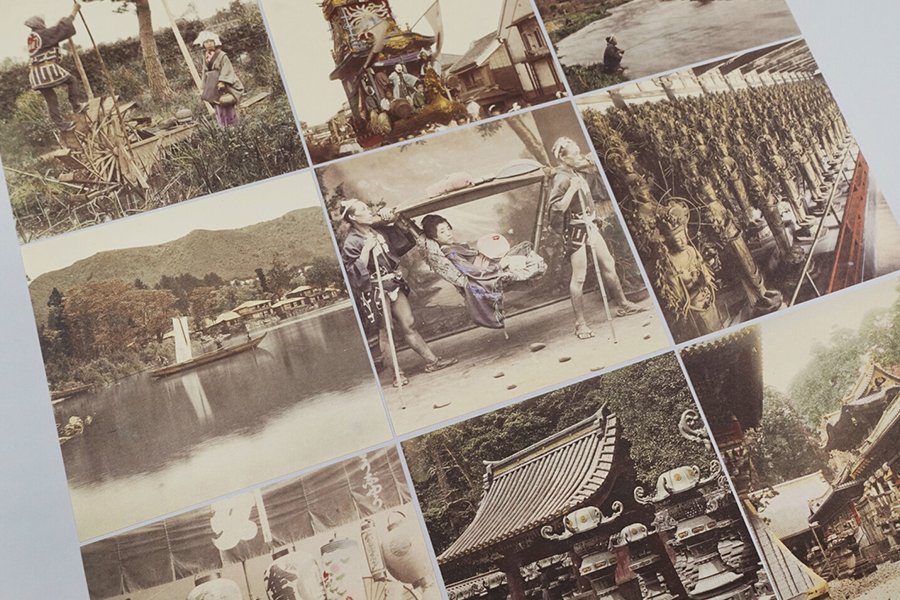
When you consider the musical catalogue of KITCHEN. LABEL and its distinctive style, would you say it’s congruent with the music you grew up listening to or were inspired by in your formative years?
Like most kids, I got into indie music – in particular shoegaze and dream-pop – during my early teens, and along the way in 1995, I discovered Japanese music which happened to be in something of a golden era with the likes of Spitz, Fishmans and Visual-Kei. For a number of my favorite artists then, one name was always mentioned as their influence, and he is David Sylvian. Through his works and collaborations, it led me to deeper stuff like jazz musicians from ECM to ambient musicians like Jon Hassell, Mark Isham, Ryuichi Sakamoto, Fennesz, Takagi Masakatsu, among many others. It just snowballed from there, and that is probably only the beginning.
I think what started for us was when social media became a thing, and at that time, we were using MySpace to connect with artists all over the world. Before we knew it, we formed a virtual community of artists. The kind of music we were interested in converged with many like-minded artists on that platform, particularly artists from Japan. When ASPIDISTRAFLY toured Japan for the first time in 2007, that was the time we met our “Myspace friends” like haruka nakamura, ironomi, Akira Kosemura, Chihei Hatakeyama, etc. I also remembered fondly that Carl Stone, one of the pioneers of live computer music, came to see our show. I believed that we were at that special moment with these artists and the Tokyo music scene revolving around them at that time. Sometimes, you happen to be at the right place and time, and the experiences you gain from it help you manifest your unique style. I believe that is how we developed our sound eventually.
There is a vivid, atmospheric beauty that’s always present in your releases, like an abstract slice-of-life aesthetic depicting a soundtrack of the stories within. Why does the label harbour this penchant for scenic oeuvres?
It’s been an unwritten rule from the beginning that the people we work with emphasise atmosphere and texture over everything else. Most of the time, we allow the atmosphere of the music to take the wheel before any music conventions, and we believe that one can evoke nostalgia without venturing into the overly sentimental territory. So the layer of textures these songs reside in almost becomes a structure for storytelling or a context for the melodies. I mean, “Kitchen.” was named after a Banana Yoshimoto novel of the same name. Yoshimoto’s prose deeply affected us, and perhaps this abstract slice-of-life influence is still apparent in our works.
KITCHEN. LABEL is meticulously precise in its curation, swirling within a web that spans neo-classical, folk, ambient and avant-garde. In a humongous world with an endless spectrum of genres, is there ever any temptation to explore sounds that might seem uncharacteristic for the label? And if so, how do you resist it?
No matter what genres we explore, we’re always going to have a foot in the “ambient” pool. So the possibilities are endless; we enjoy crossing boundaries and genres with new music. But I would say that continuity plays a more significant part in our label, and we like to work with forward-thinking artists. Many of our artists come back to the label to work on their next second and third albums, evolving with each work. In a way, we grow as a label with our artists, and likewise, our listeners will grow with our artists.
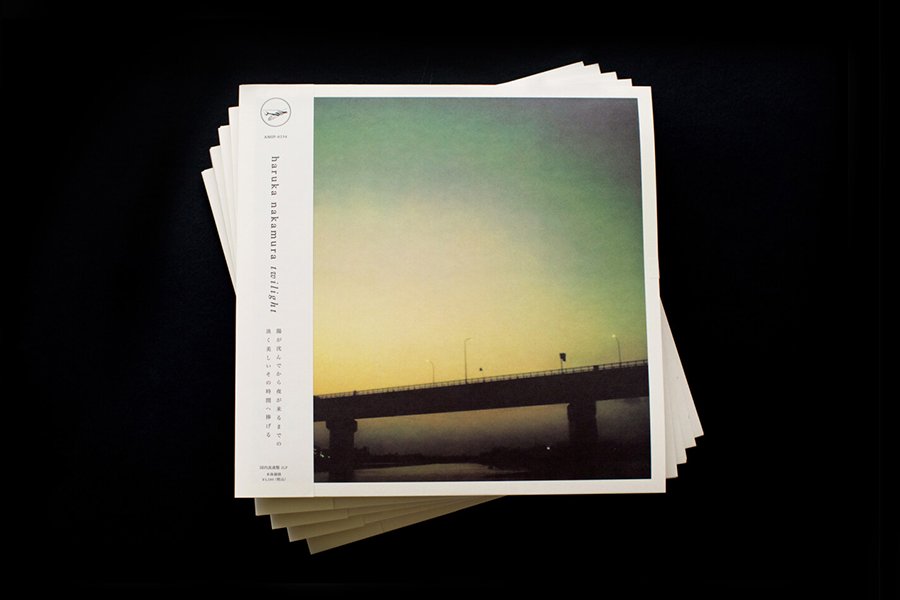

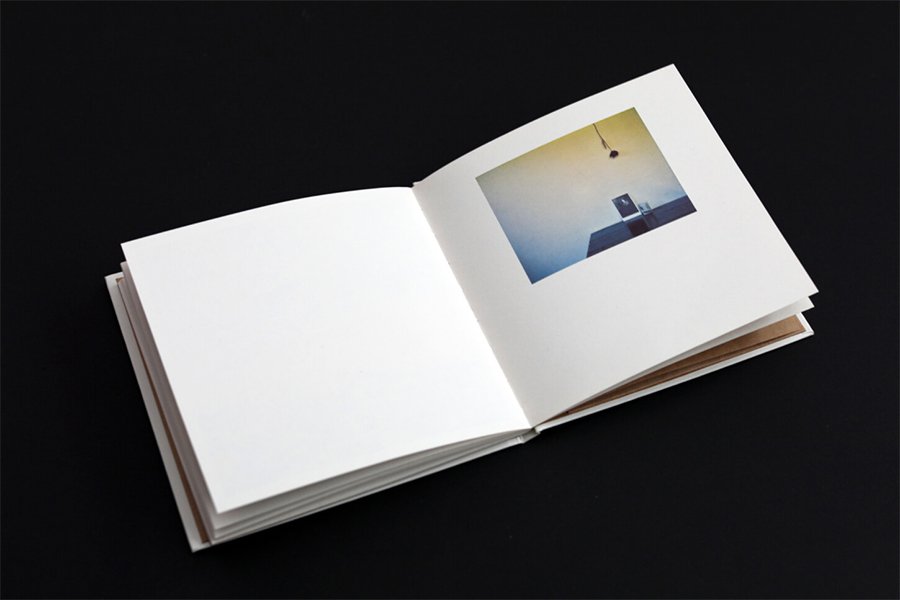

The operation of the label is unique in that it bounces between Singapore and Japan. Did you have a deep connection with the country even before it shaped the identity of the label?
Japanese music, films, and design greatly impacted me during my formative years. When I first travelled to Japan, many were surprised by how much I knew about Japanese music. The year was 2007, so I think back then, they didn’t exactly know much about Singapore, so naturally, they were amused to find a Singaporean who had this deep interest in their industry and culture. Personally, it helped break the ice and made them feel comfortable working with me.
This is a bit of a TMI. When I was in kindergarten, I was enrolled in a mixed school filled with Japanese expat classmates. So, some of my first friends were Japanese. I’m not sure if my connection with Japan has anything to do with it. Maybe it did?
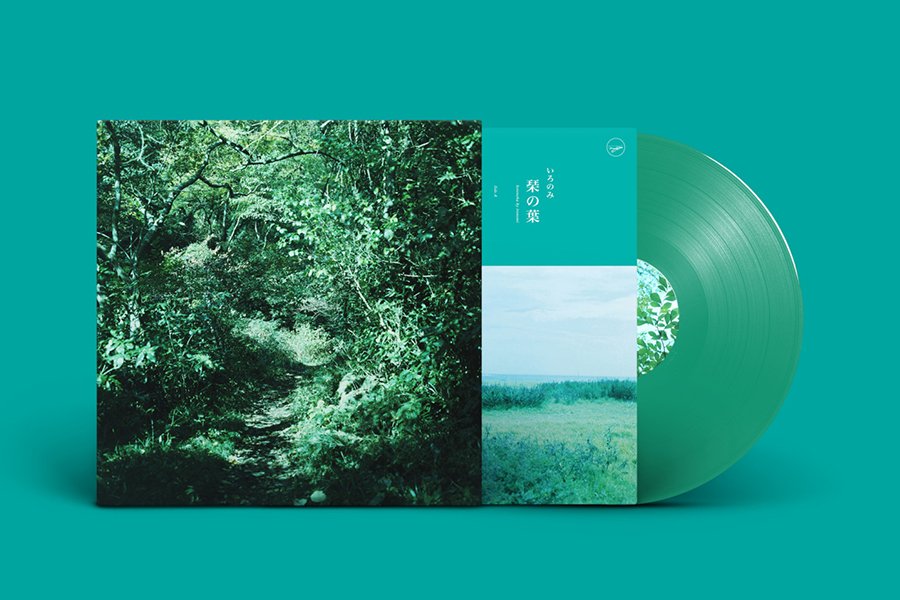
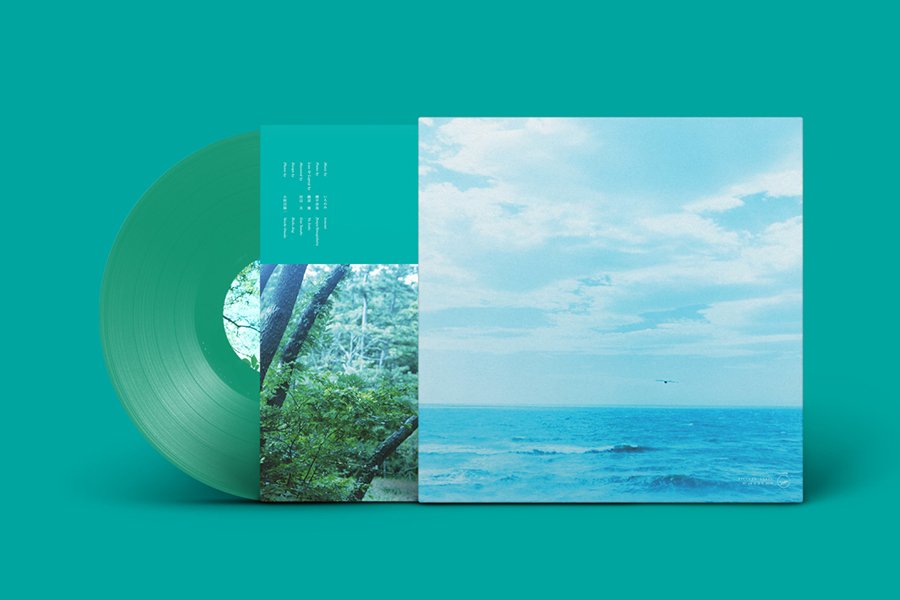
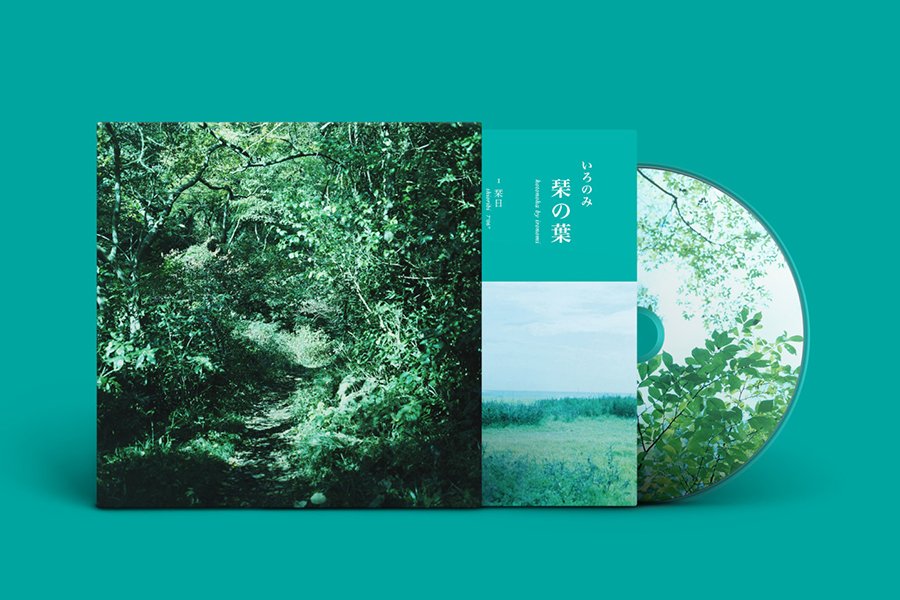
What are the perks of running a label with Japan as a base, and how would you describe the like-minded community there that favours these kinds of sounds? Is it equally niche?
Having most of our music activities promoted in Japan enables us to put forth something that keeps us within this larger narrative, especially in a country with such a profound history of ambient and experimental music. The Japanese music industry is unique – while it enabled the label to stay small and operate independently, sales were substantial to keep the label running. We were very fortunate to find a niche market with great support from listeners and an ecosystem of like-minded people working in our community, so we don’t believe in setting ourselves up loud and short-lived. I’ve always played KITCHEN. LABEL under the radar, letting it grow slowly and organically, enabling people to discover it. Our community is still niche, but there is no denying there is a much bigger audience for our kind of music over there.
We are very fortunate to have been approached by Inpartmaint Inc. / p*dis for distribution and licensing at the start of our formation. The representatives at Inpartmaint Inc / p*dis were crucial in helping us get recognised in the music industry and made our presence felt at record stores, especially at the major ones such as Tower Records, HMV and Disk Union. p*dis have a deep understanding of what we do which I think is what created this special relationship between us. We are in good company as they also represent a lot of other labels we admire. I have worked with p*dis for 14 years now, and they feel like family to us.
April is also active in the fashion circuit (Credit: Ivanho Harlim)
KITCHEN. LABEL is a sum of moving parts, but its inception was spurred on by the core duo of you and April, with whom you have known for a long time. How has the relationship between you two influenced the growth of the label?
April and I started creating artwork in 2001 as “Kitchen.” Around the same time, we began playing music as ASPIDISTRAFLY. In 2005, soon after I graduated from university, “Kitchen.” became a creative studio I established with her as a co-founder. Within the structure of the creative studio, I started a record label arm. So yeah, the two of us go a long way.
April left the studio in 2013 to pursue her other interest in fashion and other creative work. Yet, she is still pretty much in the mix of things at KITCHEN. LABEL, both as an artist in ASPIDISTRAFLY and as a close collaborator contributing from time to time. April has always been an incredible source of inspiration and remains to be. I merely carried on the spirit of the “Kitchen” brand and moved it deeper into the music field. After all, she’s my other half and we live together. She’s someone I can count on for a second opinion. KITCHEN. LABEL is still a constant in our daily life.
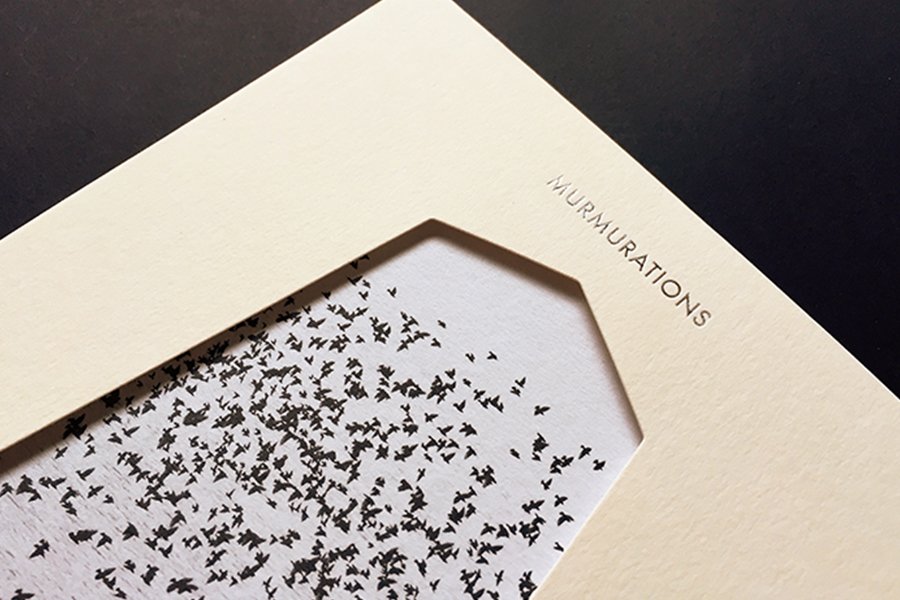
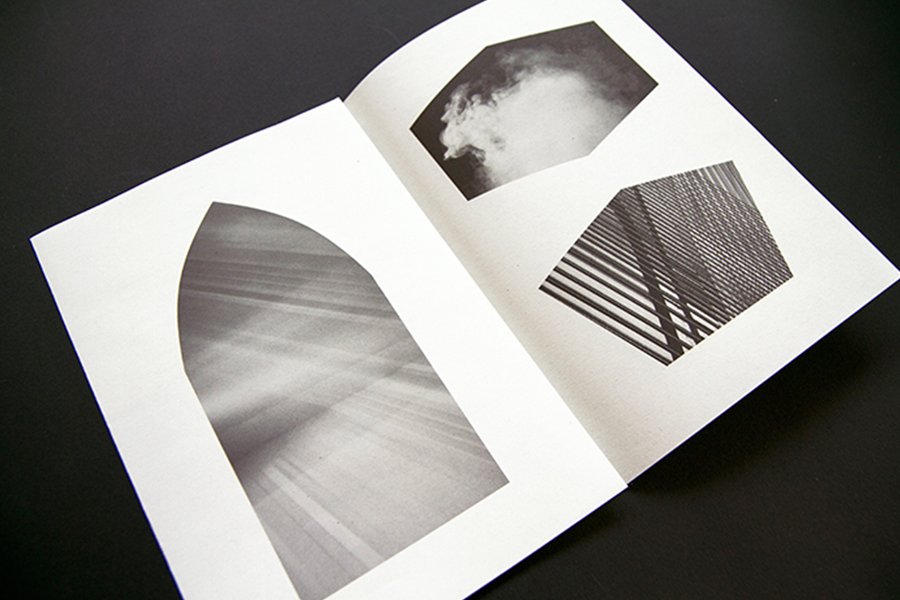
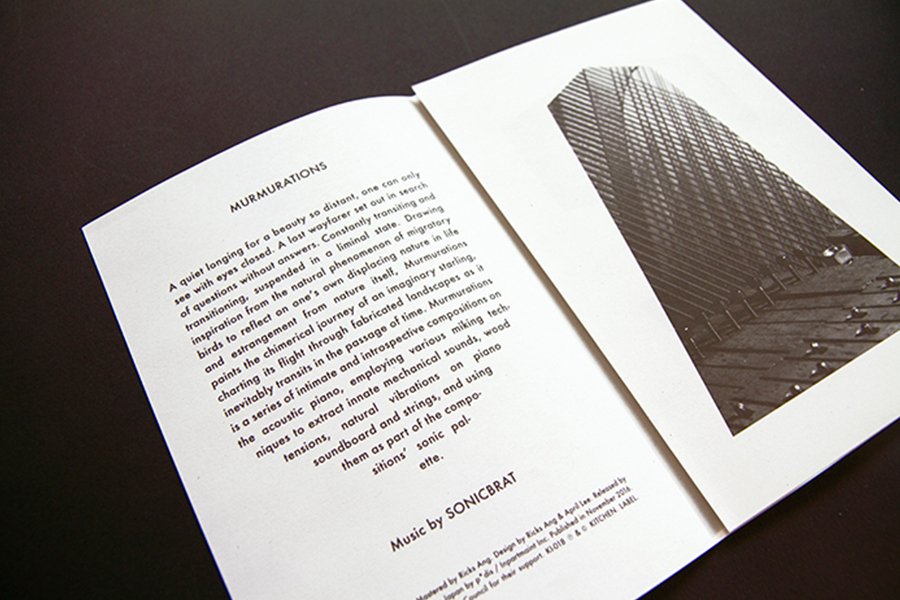
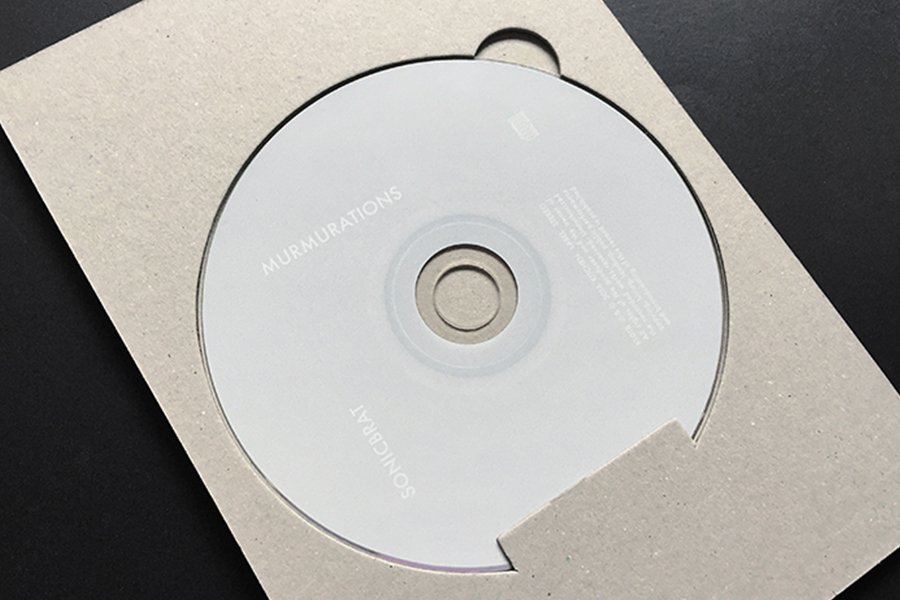
How was the knowledge gained from KITCHEN.’s creative studio origins applied to its offshoot as a label?
Music and art are essential things in my life. The two are always linked. So I started the label initially in 2004 as an imprint to release and design our albums for ASPIDISTRAFLY. When I started the label, I was very keen to find a place for our sound and form a new language, but at the same time to also develop a distinctive graphic identity under KITCHEN. LABEL. As I’m a musician myself and I have experience dealing with design and print, it helps that I can directly support my artist with fulfilling their visions for their album.
Speaking of these visions, there is a potent and powerful visual identity that’s intrinsic in the artwork of your releases. What is the process when determining these complementary works that are just as captivating as the music?
One of my favorite quotations comes from ECM Records via Gertrude Stein: “Think of your ears as eyes.”. Our artists and the label always consider the interaction between music and the artwork. We feel that the artwork is a metaphoric translation of the music itself. I think music is born from some deep, ingrained memory; one that does not describe a particular scene or place but something of our inner scenery. Each album has its own story, and through the process of making these albums, we unlock different personal truths and have one-to-one connections with our artists. I wanted the label to be a platform that would allow artists and the label to create imagery through music and sound, affecting our audience in the most subliminal way. So, it is my philosophy to execute them with as much thoughtfulness and care as possible. Physical format of music is unique because it is tactile, so it is a crucial process for us to pick the right paper and materials for the packaging too.

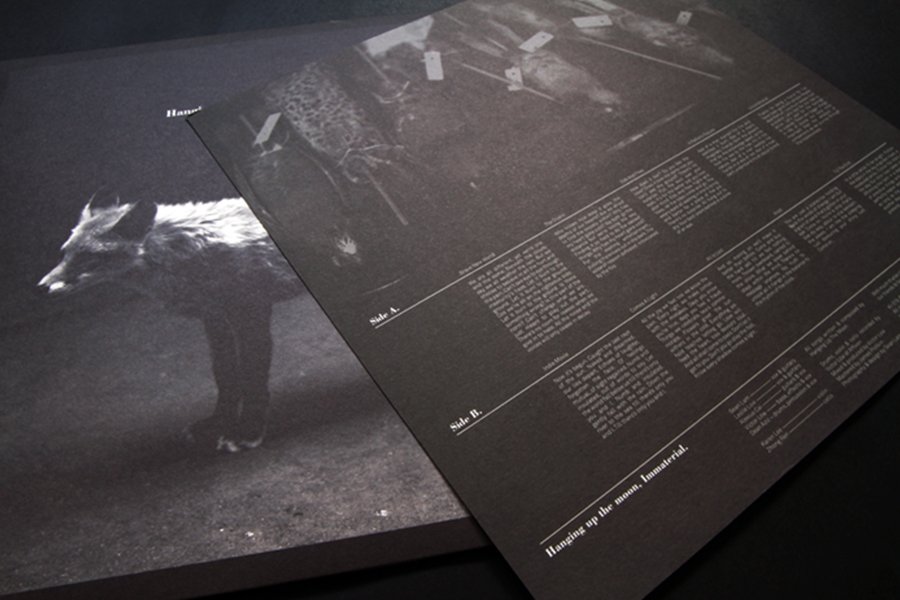
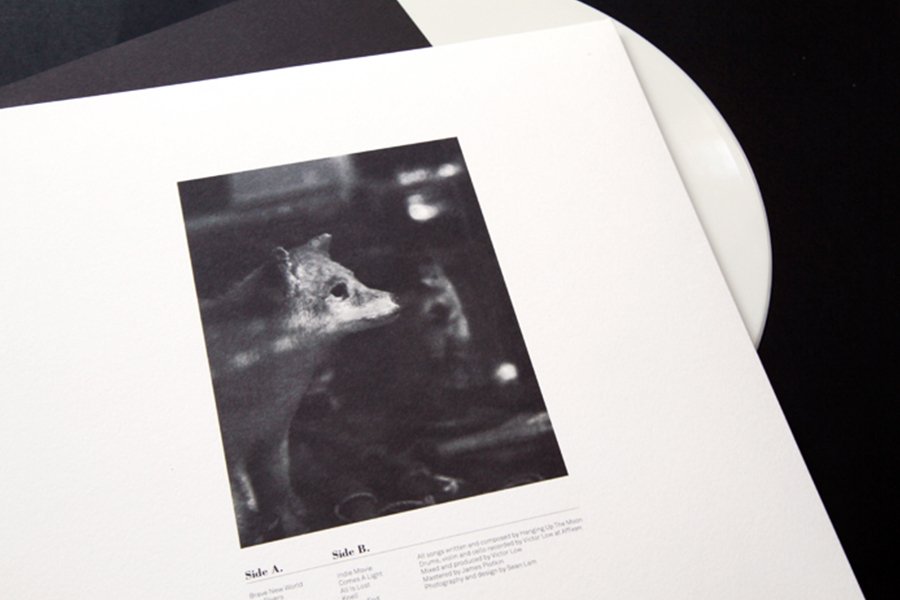
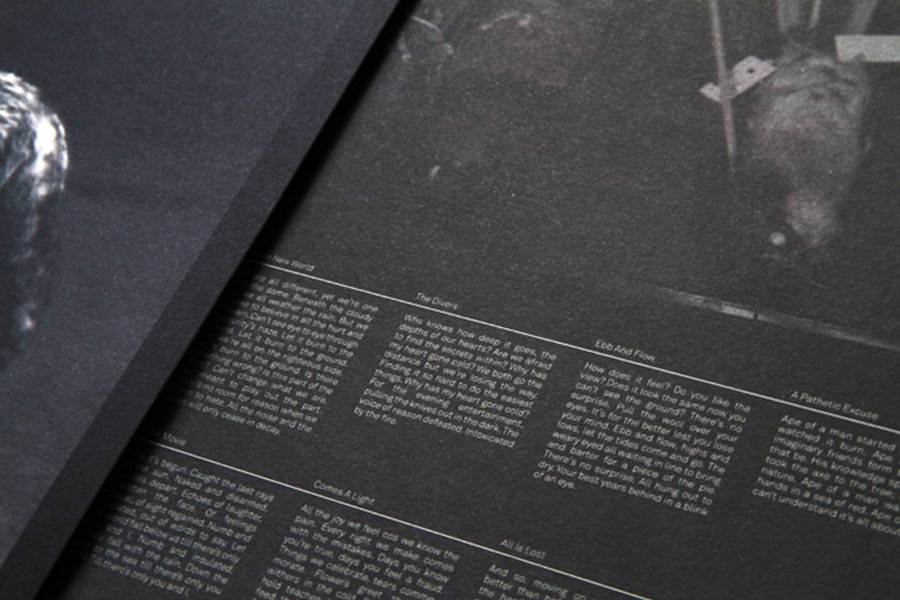
The label has had a small but strong roster of local musicians that include sonicbrat, Hanging Up The Moon and Kin Leonn. What can you say about these homegrown signees, and do you think there’s more that could be found on our shores?
During our fifth year, we started to work with a homegrown artist, Darren Ng (aka sonicbrat). We took a long time because we didn’t want to sign a Singaporean artist just for the sake of local representation. We wanted this artist to be a dream signing for us; one that we were excited to work with, more than any artists from the rest of the world. I was already aware of Darren’s works, and as we evolved, our interests intersected at that point. His album, Stranger to my room, is still one of our label’s most well-loved albums and achieved quite a cult status in Japan and South Korea. It was released in 2013, at a time when modern classical music was a boon. But in my opinion, his take on the genre is very original and true to his unique sound world. It is still a very timeless album.
When I was in secondary school, one of my buddies was the younger brother of an A&R manager at Springroll Records, a local subsidiary of Pony Canyon from Japan. So I was roped in to help out at a couple of shows and managed to catch some legendary Singapore bands live, like Concave Scream and Humpback Oak. Of course, they inspired me in a big way, and I followed very closely to their activities years after. So when Sean Lam [Hanging Up The Moon] approached the label to release The Biggest Lie in the World, which also featured Leslie Low – both of whom I have great respect for – I could never say no. I was really into this mellow psych-folk duet thing they were doing for the album.
After more than 10 years of establishing the label, we entered a second stage. We wanted to introduce a new generation of artists; Kin Leonn is one of them, along with our recent signings like Japanese producer, Meitei. They represent a group of musicians making new-school ambient music, and it’d be exciting to find out what all these will lead to as Kin is one of our most naturally gifted musicians. And speaking of Meitei, it wouldn’t be possible to work with him without Nigel and Jasmine of Evening Chants discovering him and giving him his first release in Kwaidan. I always think that we need to create a scene that can co-exist between Singapore and the world, so I’m very invested in bridging the gaps and letting nature take its course to find more homegrown artists. Kin, Evening Chants and some of our close collaborators such as Rachael of Closet Children (fashion), Christopher Sim (photography), Daniel Peters (writing), among others, all emerged at the same time and represent a new generation of creators from Singapore. I mean, Singapore is small; we didn’t have to search for these talents. They are right here in front of us.
ASPIDISTRAFLY’s new album was 10 years in the making (Credit: Ivanho Harlim)
You just releasing your new ASPIDISTRAFLY album; your first in a decade, no less. Did you feel any pressure riding on this long-awaited release, or do you think this stretched-out pause was exactly what the two of you needed as musicians? What else does its materialisation represent for you?
Our last album, A Little Fable, was released in 2011. We did feel the pressure to release the follow-up album within a couple of years. However, I always said I admire prolific artists, but we are incredibly slow in making music as we keep obsessing with every detail of it. That is just who we are. Midway through it, I also developed tinnitus, and I took around four years off making music. Life took over, April and I got married and bought a house, and we were both busy in our careers outside of ASPIDISTRAFLY. She is working as a creative director for an AI company, and I myself being the producer for KITCHEN. LABEL. However, the album was always a constant for us; we never stopped thinking about it through these years. We felt relieved to finish it finally, but also it was done at a no better time because miraculously, A Little Fable gained a second lease of life and found itself new listeners in ‘cottage-core’ fans and Tiktok users. We earned 2.3 million listens on Spotify last year and our listeners growth has been on an upward curve since 2016. Without ever being on any Spotify editorial playlists or releasing any new music, it is a bit unexpected but we are so grateful nonetheless.
During the production of the new album, I became very invested in the pursuit of discovering older lost music. So, I was digging out records and listening to 1980s-1990s ambient pop music from Japan and Asia, new age music, musique concrète, Béla Bartók, Akina Nakamori and left-field Windham Hill. To some extent, the whole process of working as a producer and being involved in all the albums on KITCHEN. LABEL also influenced and inspired what transpired for ASPIDISTRAFLY in Altar of Dreams. We’re really happy with how the album turned out eventually and it wouldn’t be possible if we had not taken this stretched-out pause. I guess there is always a reason for everything.
And to end off, legacy is a notion that follows closely after longevity. What kind of legacy would you like KITCHEN. LABEL to leave behind?
We’ll be celebrating our 15th anniversary, and we hope to continue to run the label for as long as we can. I strongly believe what makes music great is the memory it’s attached to. It doesn’t matter what anyone else thinks of it, and it’s how you interpret it. I have fond memories of every record I have ever put out, and I’m sure someone else would have their own. Affecting listeners in a positive way and giving them something they know has been created from care and passion is something very significant to me.
A Polaroid of Ricks and April (Credit: Christopher Sim)
You can listen to the catalogue of KITCHEN. LABEL on its official website and Bandcamp page. The third album, Altar of Dreams, by ASPIDISTRAFLY is out now.
